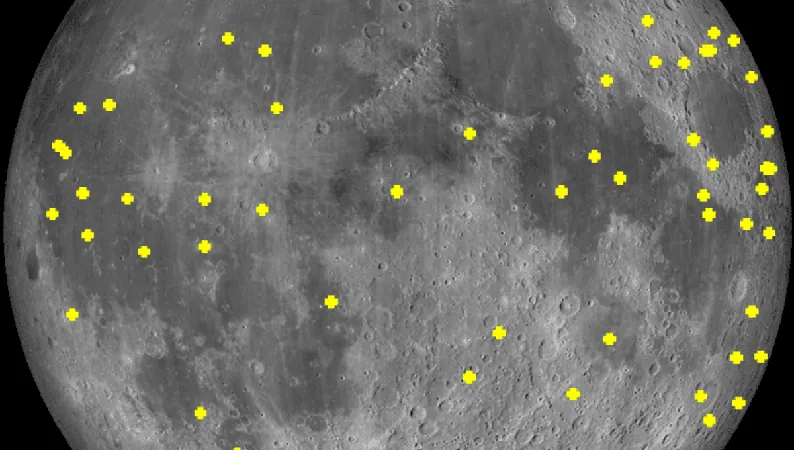
Mystifying Moonlights: Centuries of Unexplained Lunar Flashes
2025-07-17
Author: Jessica Wong
Centuries of Celestial Mystery
For hundreds of years, curious observers have reported strange flickers and flashes on the Moon, dating back to the 17th century when telescopes first came into use. However, unverified accounts stretch back to the Medieval era, raising eyebrows about what exactly resides in our night sky.
An Eerie Encounter in 1178
In a striking tale from 1178 CE, the English monk Gervase of Canterbury described an astonishing event: "There was a bright new moon... and suddenly the upper horn split in two. From the midpoint of the division a flaming torch sprang up, spewing out fire, hot coals, and sparks." His otherworldly description of the Moon 'throbbing like a wounded snake' hints at an early encounter with what we now refer to as transient lunar phenomena (TLP).
A Legacy of Observation
Sir Patrick Moore, a British astronomer known for his eccentricities and white monocle, formalized the term 'transient lunar phenomena' based on his decades of moon-gazing. In a 1977 reflection, Moore recounted how, after nearly forty years of watching, these phenomena began to gain acknowledgment as real occurrences.
Flashes Galore: The Modern Understanding
Initial assumptions held that TLPs were rare scenes seen by amateur astronomers during their extensive lunar observations. Yet, modern research suggests there may be as many as eight flashes per hour across the Moon's surface, according to the European Space Agency (ESA). What once seemed like optical illusions have transformed into a subject of serious scientific inquiry.
Gas or Rocks? Theories Abound
Theories about the origins of these flashes have evolved. In the mid-20th century, some scientists suggested that gas emissions seeping from below the Moon's crust create hazes that reflect sunlight, resulting in a brief glow. This idea was somewhat validated by later findings of radon emissions from the lunar surface.
However, the prevailing explanation today attributes TLPs to the relentless onslaught of meteorites crashing into the Moon. Without a thick, protective atmosphere like Earth's, the lunar surface faces bombardment from thousands of meteoroids annually—approximately 33,000 the size of golf balls, along with larger impacts every few years.
The NELIOTA Project: Shedding Light on Impacts
Between 2017 and 2023, ESA's Near-Earth Object Lunar Impacts and Optical Transients (NELIOTA) project extensively monitored the Moon for TLPs. This initiative confirmed 113 flashes and suspected an additional 70, leading to estimations that the Moon is hit by anywhere from 7.4 to 12.6 meteoroids per hour, especially when passing through robust meteoroid streams.
A Never-Ending Lunar Enigma
As scientists continue to unravel the mysteries of the Moon, these fleeting bursts of light remind us of the celestial enigmas lurking above. What secrets do these flashes hold? The quest for answers is ongoing, as humanity remains captivated by the wonders of our closest cosmic neighbor.


 Brasil (PT)
Brasil (PT)
 Canada (EN)
Canada (EN)
 Chile (ES)
Chile (ES)
 Česko (CS)
Česko (CS)
 대한민국 (KO)
대한민국 (KO)
 España (ES)
España (ES)
 France (FR)
France (FR)
 Hong Kong (EN)
Hong Kong (EN)
 Italia (IT)
Italia (IT)
 日本 (JA)
日本 (JA)
 Magyarország (HU)
Magyarország (HU)
 Norge (NO)
Norge (NO)
 Polska (PL)
Polska (PL)
 Schweiz (DE)
Schweiz (DE)
 Singapore (EN)
Singapore (EN)
 Sverige (SV)
Sverige (SV)
 Suomi (FI)
Suomi (FI)
 Türkiye (TR)
Türkiye (TR)
 الإمارات العربية المتحدة (AR)
الإمارات العربية المتحدة (AR)